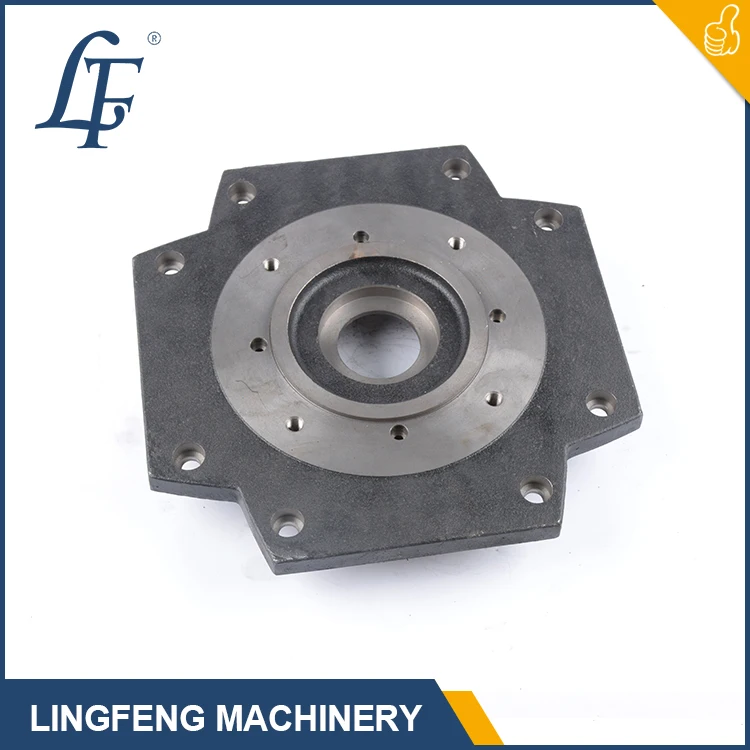Valamismeetodi valimine on kriitilise tähtsusega, kui konstrueeritakse osi tööstusmasinatele. Erinevatel valamisviisidel on erinevad eelised ning on vaja valida meetod, mis sobib ideaalselt masinaosade vajadustele. Millised on erinevate valamistehnoloogiate eelised? Kuidas valida kõige sobivam variant tööstusmasinate osade jaoks?
Erinevate valamismeetodite eelised või kasud tööstusmasinate komponentide jaoks
Üks klass raudavooltöötlus ajaloos on kasutatud liivvalu, mis on majanduslik meetod suurte ja suhteliselt keerulise geomeetriaga komponentide valmistamiseks. Liivvalu sobib hästi erinevatele metallidele, olgu need siis ferroosid või mitteferroosid, näiteks alumiiniumile, pronksile (kaupras selleks segatud koos vasega), messingile, rauale jne. Täpsus- / investeeringuvalaminen Teisiti võib täpsus- või investeeringuvalamine (mida tänapäeval tehakse) olla protsess, mis sobib paremini suure hulga identsete valiste korduvalt täpseks tootmiseks. See protsess on ideaalne keeruliste osade valmistamiseks kitsaste lubatud kõrvalekaldetega ja hea pinnatöötlusega. Mis puutub komponentide valmistamisse, siis tihendid, ventiilid ja turbiinilaeblad valmistatakse sageli investeeringuvalamise teel.
Vastupidi on survevalamine efektiivne valamismeetod, mis sobib ideaalselt suure hulga väikeste ja keskmise suurusega detailide valmistamiseks. Survevalamite mõõtmete täpsus ja pindeseisund on hästi sobiv täpseid komponente nõudvate osade jaoks. Lisaks on tsentrifugalvalamine protsess, mille käigus sulatud metall surutakse vormi tsentrifugaaljõudude toimel ning saadakse peeneteralise struktuuriga esemeid, mis on kulumiskindlad ja korrosioonikindlad. Sedaprotsessi kasutatakse tavaliselt silindriliste komponentide, nagu torud, kestad ja rõngad, valmistamiseks.
Kuidas valida õige valamismeetod oma tööstusmasinate osade jaoks?
Valides oma tööstusmasinate komponentide jaoks optimaalse valutehnoloogia, tuleb hinnata mitmeid tegureid. Esiteks tuleb hinnata komponentide tegelikku eesmärki (suurus, kuju ja materjal). Näiteks, kui peavad osad olema kerged ja korrosioonikindlad, siis on alumiiniumi liivvalamine tõenäoliselt parim valik. Kui aga peavad osad olema täpsemad ja detailirohked, võib investeerimisvalamine olla sobivam lahendus.
Teine oluline aspekt, mida tuleb arvestada, on toodetavate ühikute arv. Väikeste partide puhul võib investeeringusulamise/liivasulamise meetod olla kuluoptimeeritud lahendus, suurtootmises aga on rõngassurutis sulamine lisandväärtusega lahendus tema kõrge tootlikkuse tõttu. On oluline ka arvestada, millised mehaanilised omadused osadele vajalikud on, näiteks tugevus, kõvadus ja plastilisus. Erinevate sulamismeetodite mehaanilised omadused ei ole sarnased, seega õige valik aitab osadel jõuda nõutud töökindluse tasemele.
Õige sulamistehnoloogia tööstusmasinatesse mõeldud osade puhul tuleb valida nii, et saavutada võimalikult hea kvaliteet optimaalse hinnaga. Arvestades osade nõudeid, tootmismahtu ja mehaanseid omadusi, saavad tootjad valida, milline kahest valamistehnoloogiast on nende vajadustele sobivaim. Kas tegemist on liivavalamisega, täpsusvalamisega, survevalamisega või tsentrifugaalvalamisega – saate kõik, mida soovite, et luua toiduainete valmistamiseks mõeldud masinate osi.
Millised on tänapäevaste valamistehnoloogiate eelised tööstusmasinate osade valmistamisel?
On mitmeid põhjuseid, miks tänapäevaste valamistehnoloogiate kasutamine tööstusmasinatesse mõeldud osade valmistamisel on eelistatav. Üks olulisemaid on see, et saab luua keerulisi kujundeid ja mustreid, mida teiste protsessidega oleks raske saavutada. See võimaldab toota efektiivsemaid ja/või tõhusamaid masinaosasid, mis parandavad tööstusseadmete üldist toimimist.
Lisaks võimaldavad kaasaegsed valamismeetodid osade valmistamist suure täpsuse ja hea pindesengiga, mis muudab need täpsemaks ja usaldusväärsemaks. See võib vähendada remondikulusid ja seismise aega kallite tööstusliku rullvarustuse puhul, säästes ettevõtetel nii aega kui raha nende masinate eluea jooksul.
Samuti võivad täiustatud valamismeetodid võimaldada osade tootmist suuremas koguses ja/või kiiremini kui traditsioonilised meetodid. See võib aidata rahuldada tööstusliku tootmise vajadusi keerukate osade järele ning hoida neid laos.
Parimad valamismeetodid tööstusmasinatesse mõeldud osade jaoks
Tööstuslike masinaosade levinud valamistehnoloogiad. Tööstuslikus valamises kasutatakse mitmeid ülitäpseid valamistehnoloogiaid. Üks levinud tugevalamise vorm on detaili valmistamine vahimustrist, millele kantakse keraamiline suspensioon, seejärel sulatatakse vahk ära, jättes muldse valamiseks. See meetod võimaldab saavutada väga täpse ja detailse disaini, millega saab toota keerulisi mehaanilisi detaile.
Teine populaarne ja eriti suurte detailide puhul laialdaselt kasutatav valamismeetod on liivavalaminen, kus muld formeeritakse, pakkides liiva detaili mudeli (või mustrit) ümber. See protsess on majanduslik ja paindlik erinevate tööstuslike komponentide puhul.
Tugevaid ja robustseid komponente nõudvad tööstusmasinad valmistatakse tihti ka suruvalamise teel. Selle käigus süstitakse sulatud metall kõrge rõhuga muldse, mis tagab lõpptoodetele suurepärase pindlõpu ja dimensioonilise täpsuse.
Tööstusmasinate osade valamisprotsess müümiseks
Hind, kvaliteet ja tarnimisaeg on olulised aspektid, mida tuleb arvestada, otsides tööstusmasinate osade hulgivalamiste tarnijat. Paljud valamisteenuse pakkujad pakuvad suuremate tellimuste puhul hinnaallahindlusi, seega on odavam osta masinaosad korraga suuremas koguses.
Samuti on oluline valida mootormoldamine tehnoloogia, mis vastab tootmisel olevate tööstusmasinate osade konkreetsetele vajadustele. Näiteks kui teil on vaja osades väga suurt täpsust, võib sobida sulamisvalamine; tugevate ja robustsete osade puhul võib sobida pigem suruvalamine.
Valides õige valamisprotsessi hulgihange tööstusmasinate osade jaoks, saavad ettevõtted loota kõrgekvaliteediliste osade saamisele konkurentsivõimelise hinnaga – ja nii täidetakse nende tootmistarbed.
Sisukord
- Erinevate valamismeetodite eelised või kasud tööstusmasinate komponentide jaoks
- Kuidas valida õige valamismeetod oma tööstusmasinate osade jaoks?
- Millised on tänapäevaste valamistehnoloogiate eelised tööstusmasinate osade valmistamisel?
- Parimad valamismeetodid tööstusmasinatesse mõeldud osade jaoks
- Tööstusmasinate osade valamisprotsess müümiseks

 EN
EN
 CS
CS
 DA
DA
 NL
NL
 FI
FI
 FR
FR
 DE
DE
 EL
EL
 IT
IT
 JA
JA
 KO
KO
 PL
PL
 PT
PT
 RU
RU
 ES
ES
 TL
TL
 ET
ET
 TH
TH
 MS
MS



